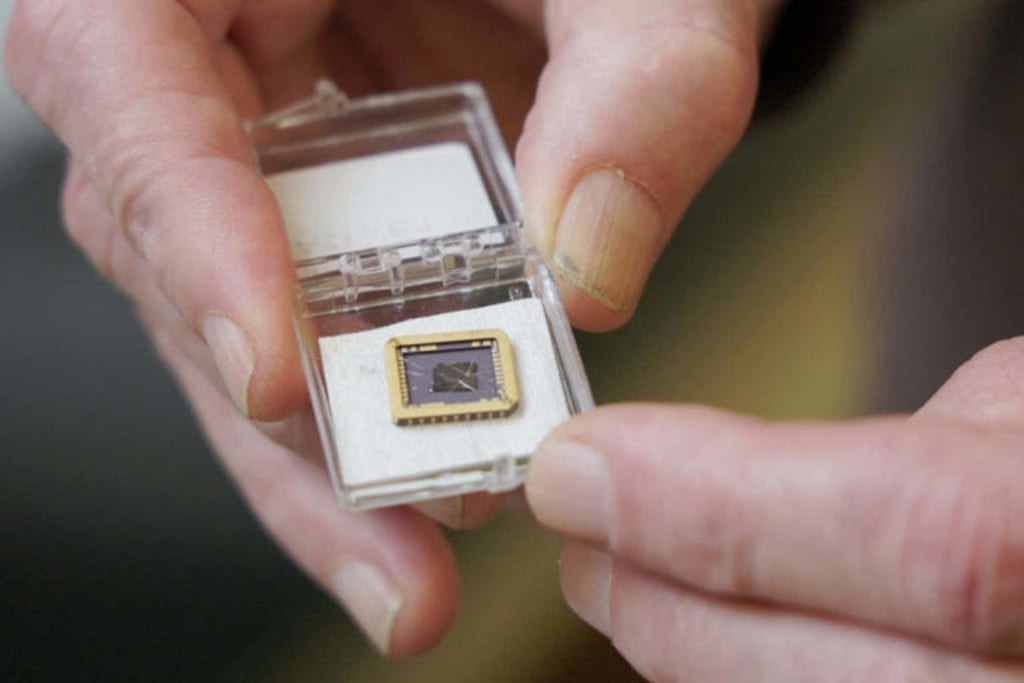First working graphene semiconductor could lead to faster computers
more efficient than silicon chips

Researchers have created a working graphene semiconductor, which could make computers faster and more efficient than silicon chips.
Graphene is a thin, strong, conductive, and resistant material, but it lacks a bandgap, which is needed to switch electricity on and off.
The researchers used silicon carbide wafers to create graphene with a bandgap, but they still face many challenges to scale up and compete with silicon.
Imagine a material that is super thin, super strong, super-conductive, and super resistant to heat and acid. Sounds awesome, right? Well, that material exists, and it’s called graphene.
It’s made of a single layer of carbon atoms, and it has some amazing properties that could make it ideal for making computer chips.
But there’s a catch: it’s really hard to make graphene behave like a semiconductor, which is what you need to make logic chips that run computers.

A semiconductor is a material that can switch between conducting and insulating electricity, depending on how you apply voltage to it.
This allows it to create the binary system of zeroes and ones that computers use to process information. But graphene doesn’t have a natural switch, or a bandgap, as scientists call it.
A bandgap is a gap between two energy levels, where electrons can jump from one to the other when they get excited by voltage. Without a bandgap, graphene is always conductive, which means it can’t be turned on and off.
Some researchers have managed to make graphene act like a semiconductor on a small scale, by creating wrinkles, domes, and holes on its surface, which affect how electricity flows through it. But these methods are not practical for making large-scale computer chips.
Until now, that is. A team of researchers led by Walter de Heer at Georgia Tech has found a way to create graphene with a bandgap, and even made a working transistor out of it.
Their method is more scalable, because it uses similar techniques to those used for making silicon chips.
They did it by using silicon carbide wafers, which are thin slices of silicon and carbon. They heated them up, so that the silicon evaporated, leaving behind a layer of graphene on top.

De Heer said that the graphene semiconductor they made had much better electrical properties than silicon chips. He compared it to driving on a freeway versus a gravel road.
But don’t get too excited and throw away your silicon chips just yet. Silicon is still cheaper, easier, and more established than graphene.
It has a huge global industry behind it, and it has been improving for decades. Moore’s Law, which says that the number of transistors in a chip doubles every two years, has been slowing down lately, because engineers are reaching the limits of how small they can make silicon transistors.
Graphene could offer a new way to boost computer performance, but it still has many challenges to overcome.

David Carey, a researcher at the University of Surrey, UK, said that the fact that they used wafers was important, because it meant that they could use the same technology that the semiconductor industry already knows how to use.
But he also said that he was doubtful that graphene would replace silicon anytime soon, because the new research still needed a lot of improvement in terms of transistor size, quality, and production.
He also said that silicon people were used to hearing about new materials that were supposed to replace silicon, but none of them ever did. He said that he was happy with his silicon laptop, and that he didn’t think he would switch to graphene anytime soon.
FOR MORE SUSPENSEFUL STORIES LIKE THIS, SUBSCRIBE BY CLICKING THE BELL ICON ON YOUR LEFT. THANKS FOR SUPPORTING
READ MORE LIKE THIS
Incredible NASA Hubble photo shows two galaxies collide in dramatic space battle
Huge network of ancient cities uncovered in the Amazon rainforest
About the Creator
Yusuf Alam
Crafting Words into Amazing Stories | Freelance Copywriter | Turning Ideas into Impact






Comments
There are no comments for this story
Be the first to respond and start the conversation.